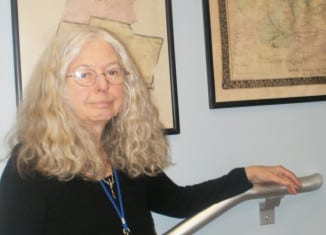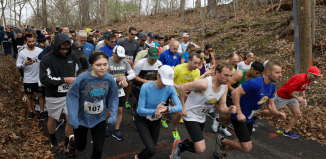Smithtown event explores Caleb Smith’s past
Librarian slated to lead lecture including 17th-century tales of popular Caleb Smith State Park Preserve

George Washington in the park? What is the history of the road? Caleb, a thorn in whose side? Did he run the gauntlet? Why was he robbed?
These are some of the anecdotes that will be part of an inside look at the history of Smithtown’s Caleb Smith State Park Preserve on Sunday, April 19, at 1 p.m. at the preserve on Jericho Turnpike. The free event will be presented by Friends of Caleb Smith Preserve. Preregistration is required by calling 265-1054.
Cathy Ball, supervising librarian of the Long Island Room at the Smithtown Library, will speak and illustrate, with artifacts, historical stories about the 543-acre preserve and the families of Caleb Smith.
The original house, which is located on the preserve, was built in 1753 by Smith — a great-grandson of Smithtown’s founder Richard Smythe — and his father Daniel Smith II.
“I have been thinking a lot about Caleb, his children and grandchildren, and the history of the park and the roads within the park and their purpose in earlier times,” said Ball, noting that she will discuss the effects of the Revolutionary War on Smith and his family. She will also delve into their lives, the mills, and the property’s subsequent history as the Wyandanch Club before becoming a state park and preserve.
Since 2004, Ball, a resident of Setauket, has worked in the Long Island Room, which contains 8,000 books and 200 boxes of documents, including original manuscripts from the 17th century. Working alongside local historian and archivist Caren Zatyk, Ball conducts programs and exhibits, supplemented with the archives.
Currently both of them are working with the New York State Department of Transportation on the development of pocket parks for cyclists along Route 347 in Smithtown, providing information and historical photo displays for each park that will depict the history of that particular area.
The Long Island Room brings in a “continual stream of researchers and authors from long distance researching family and local history,” Ball said.






